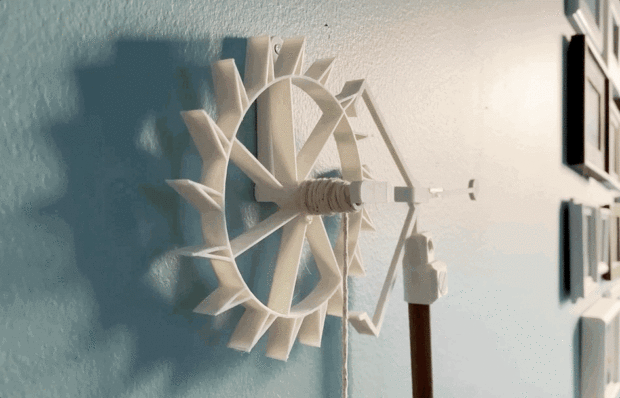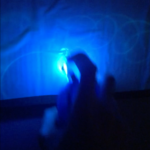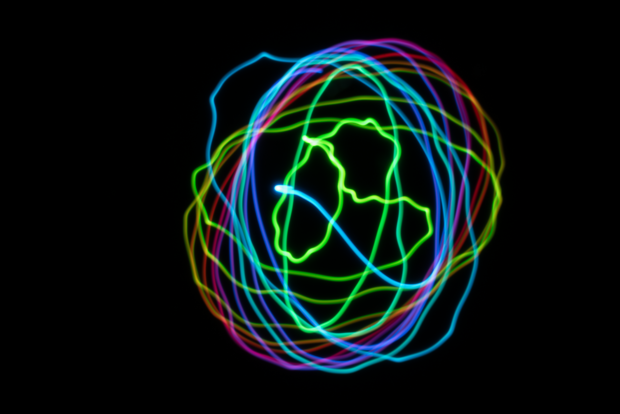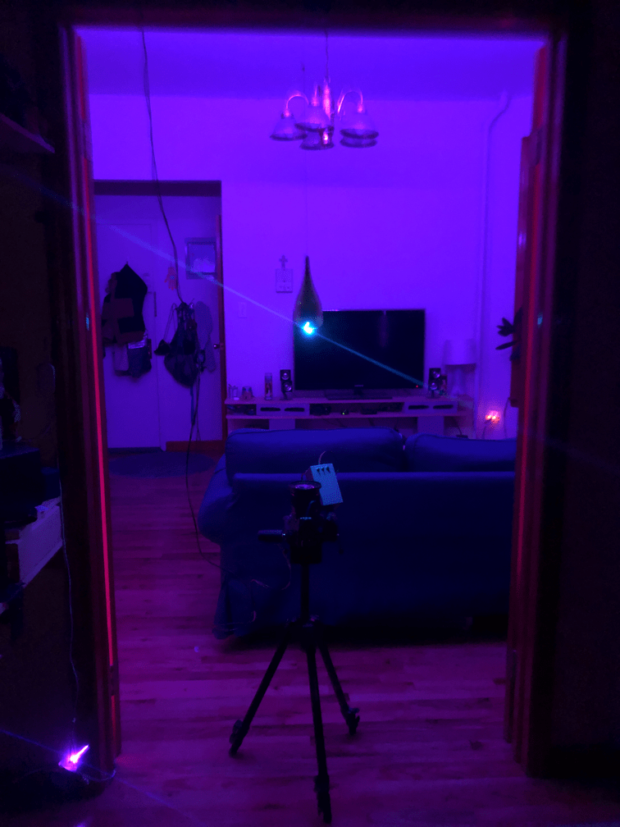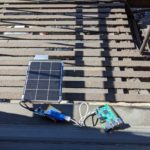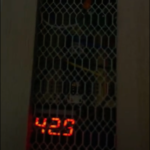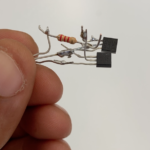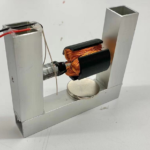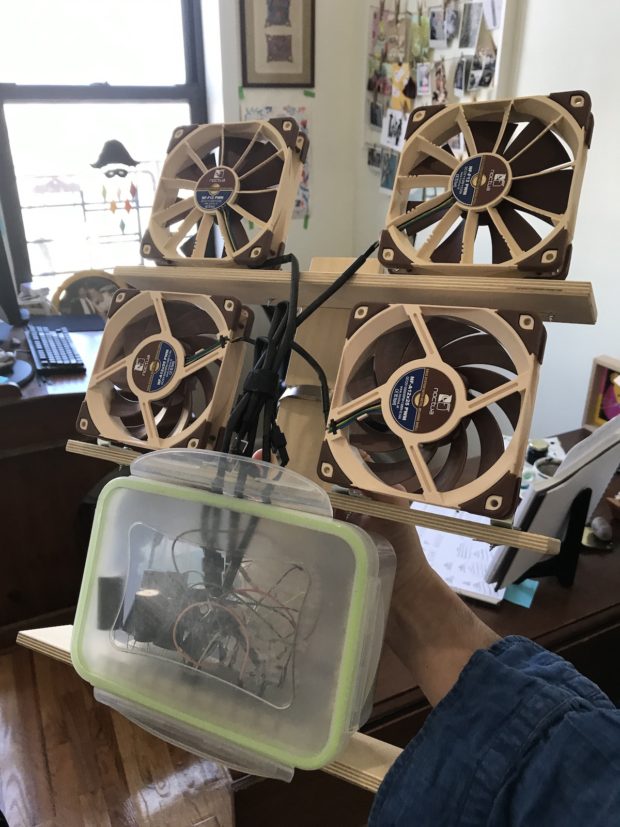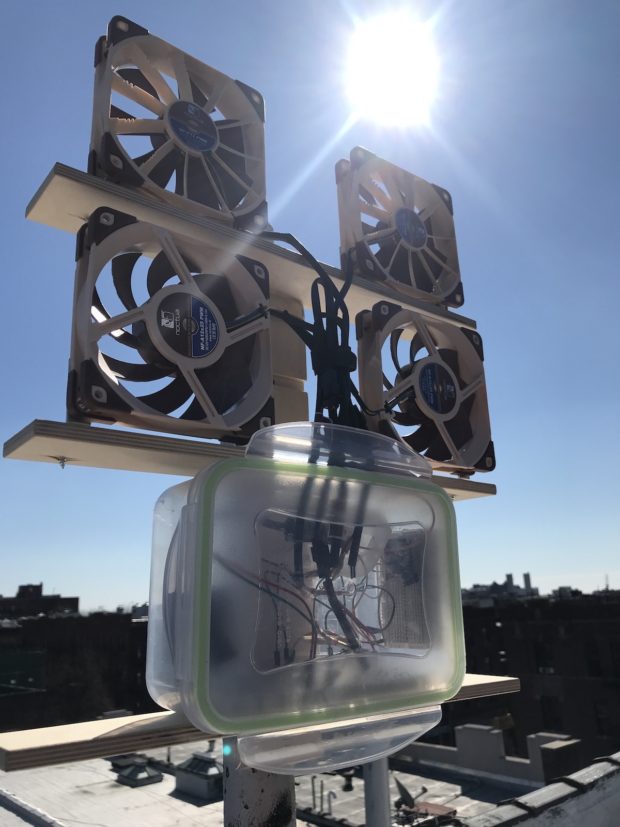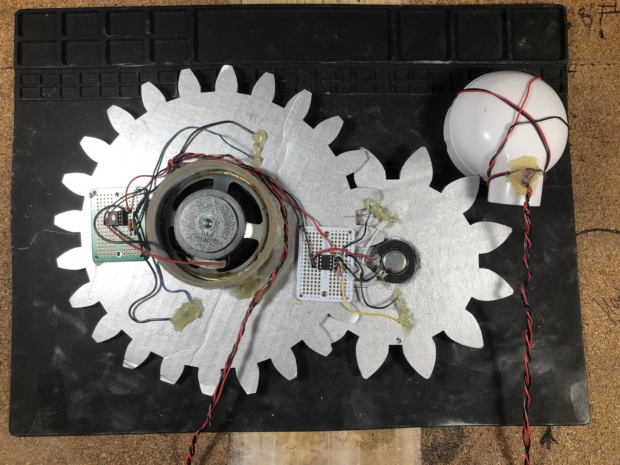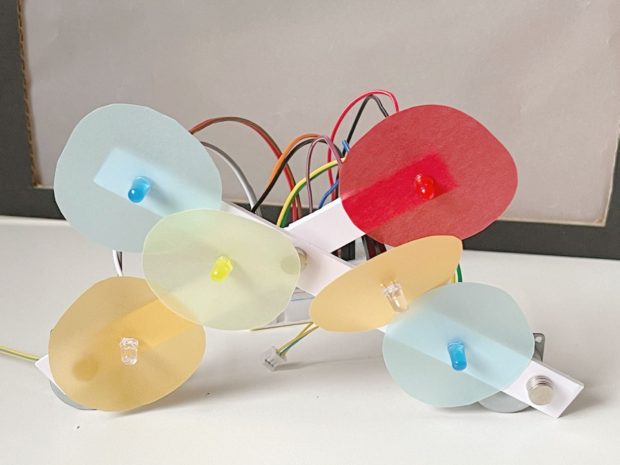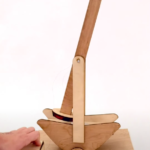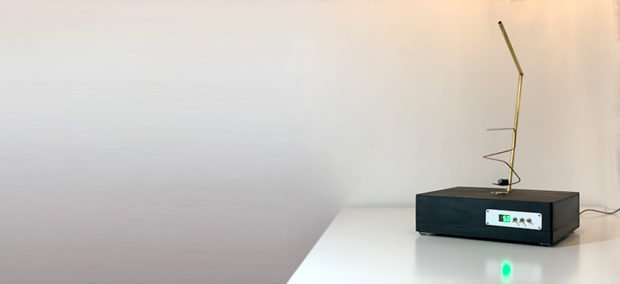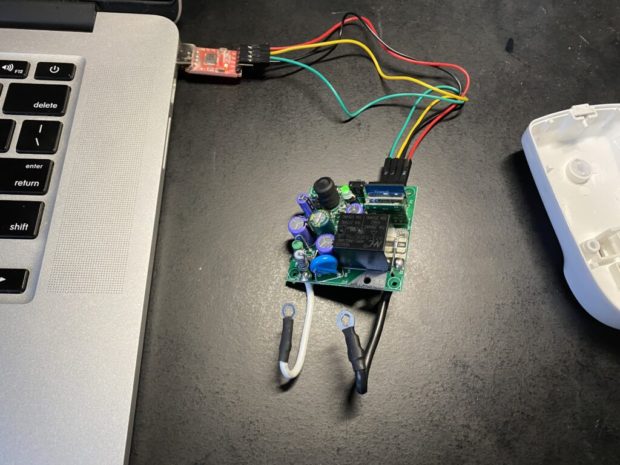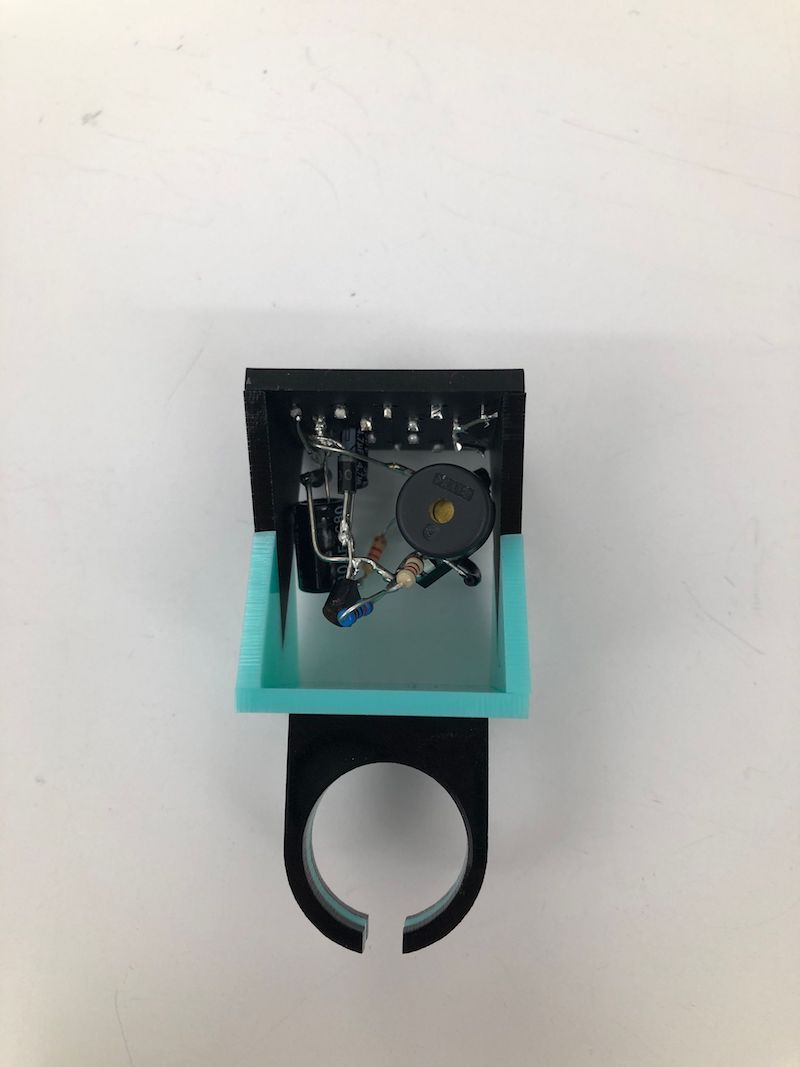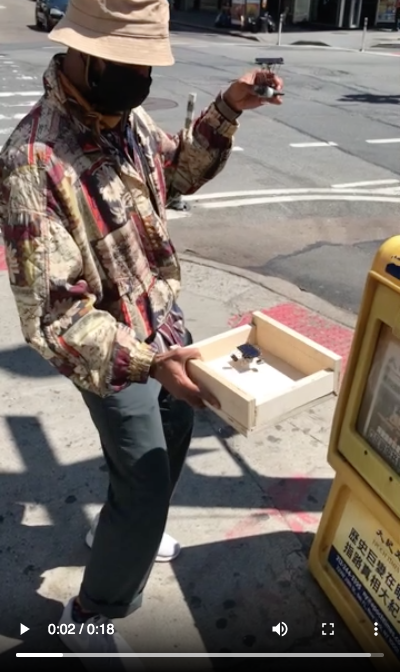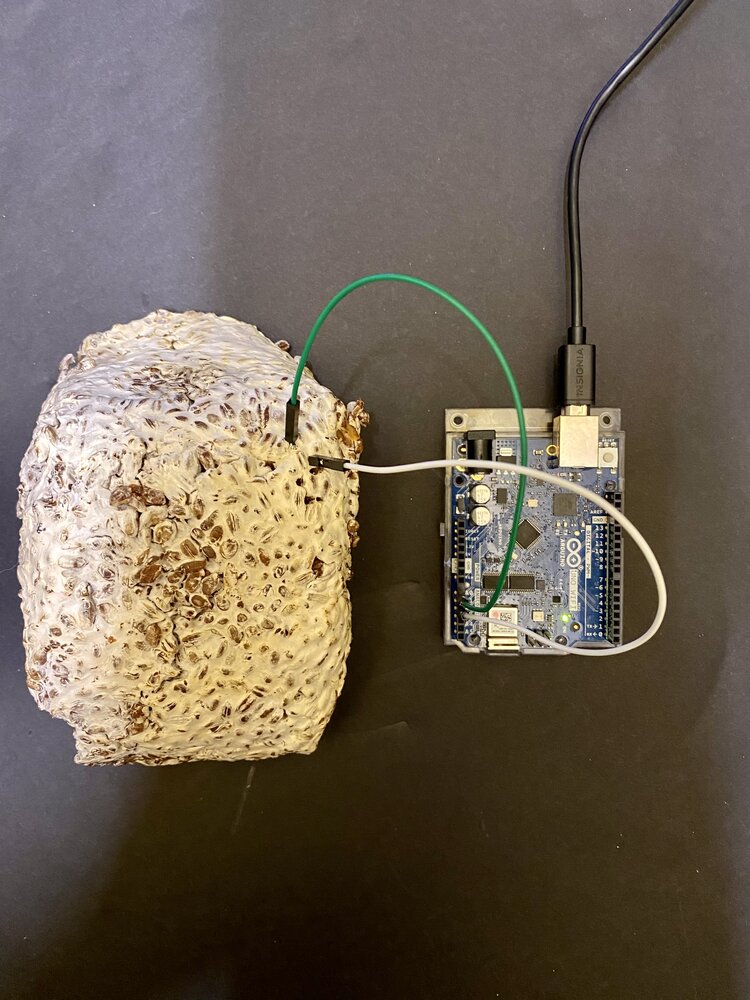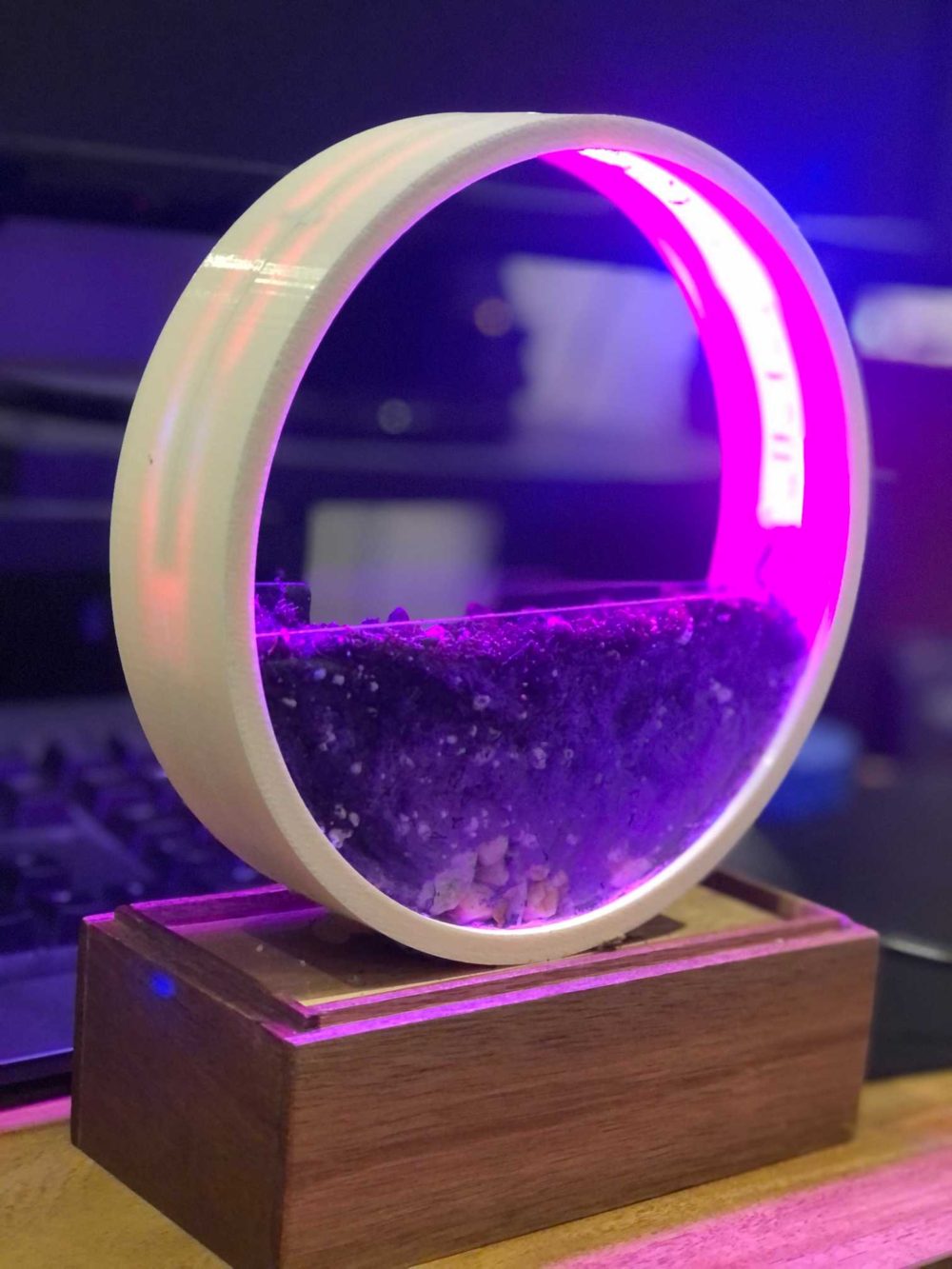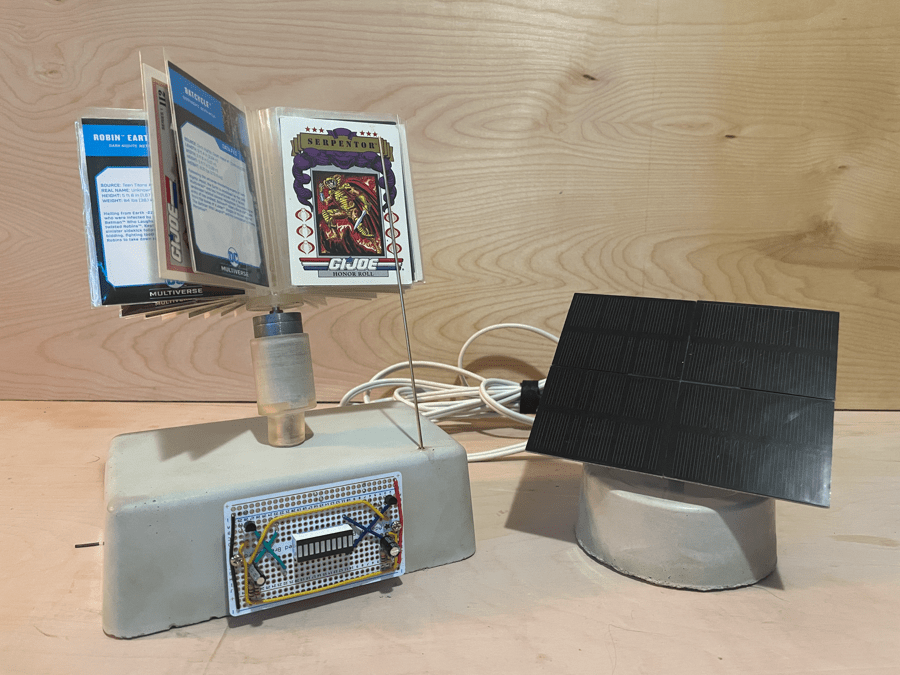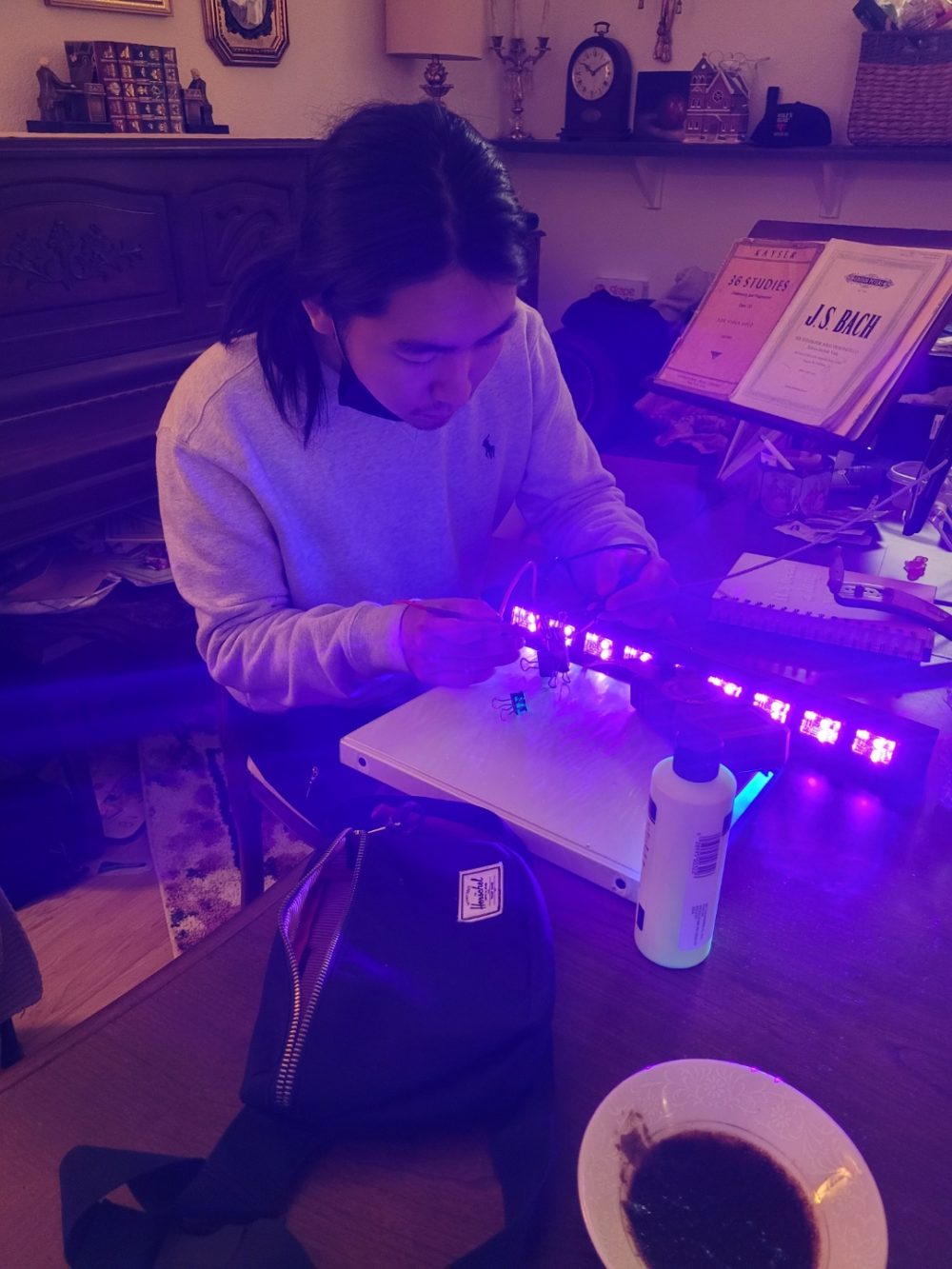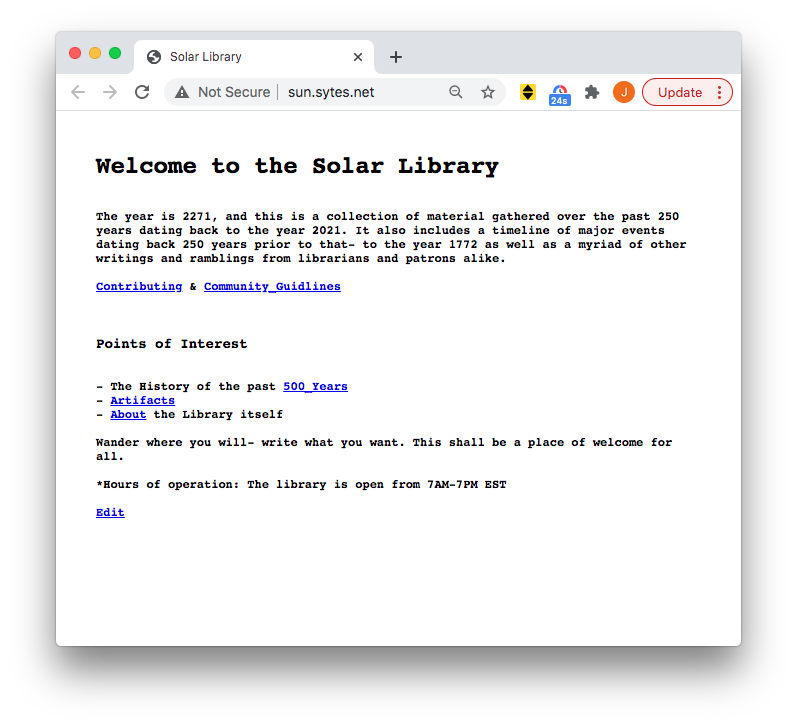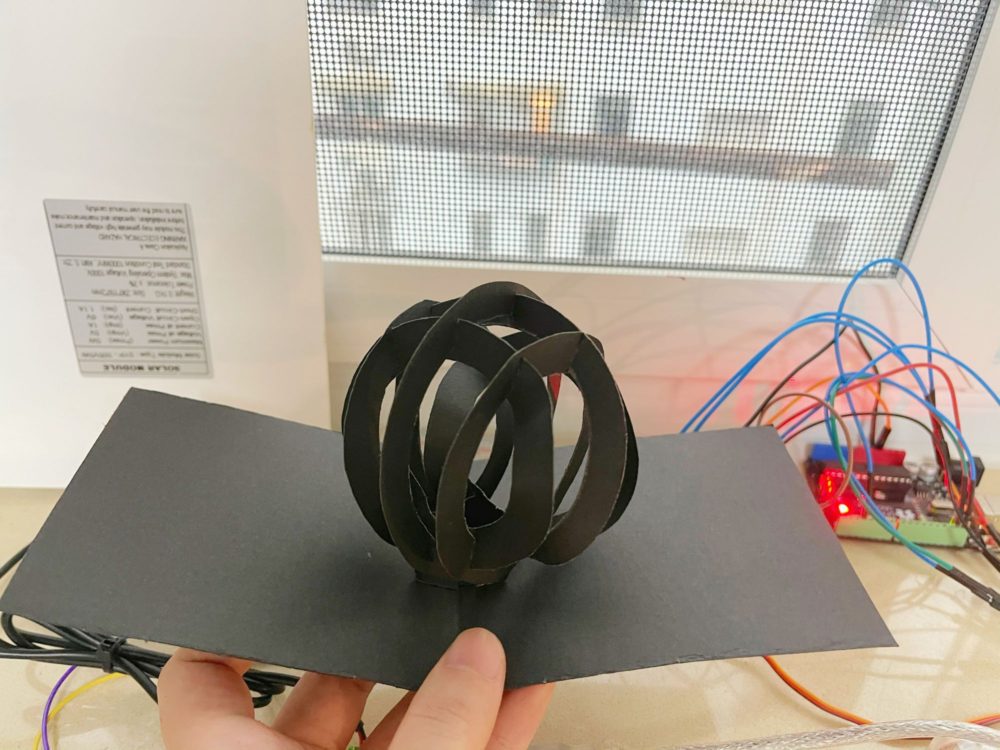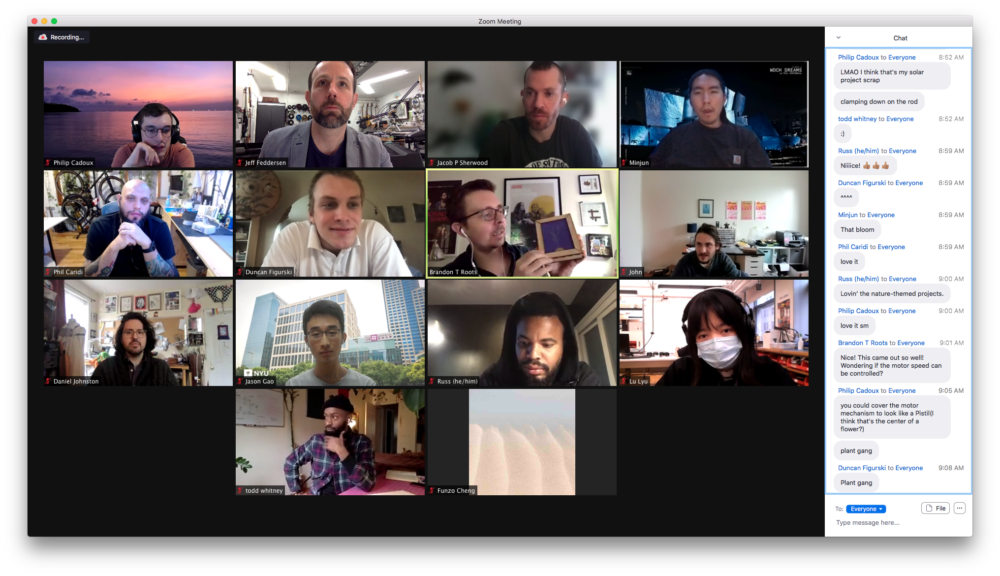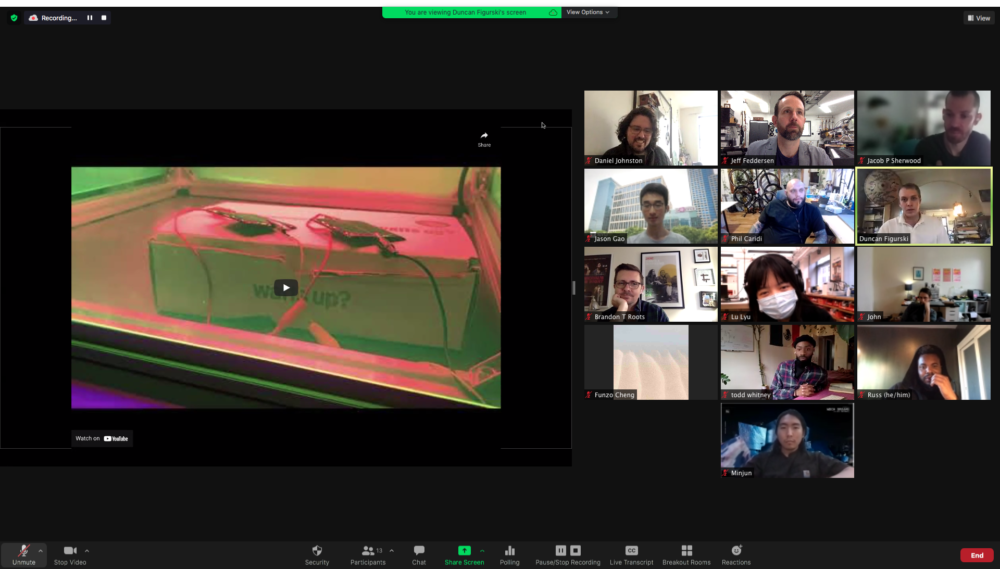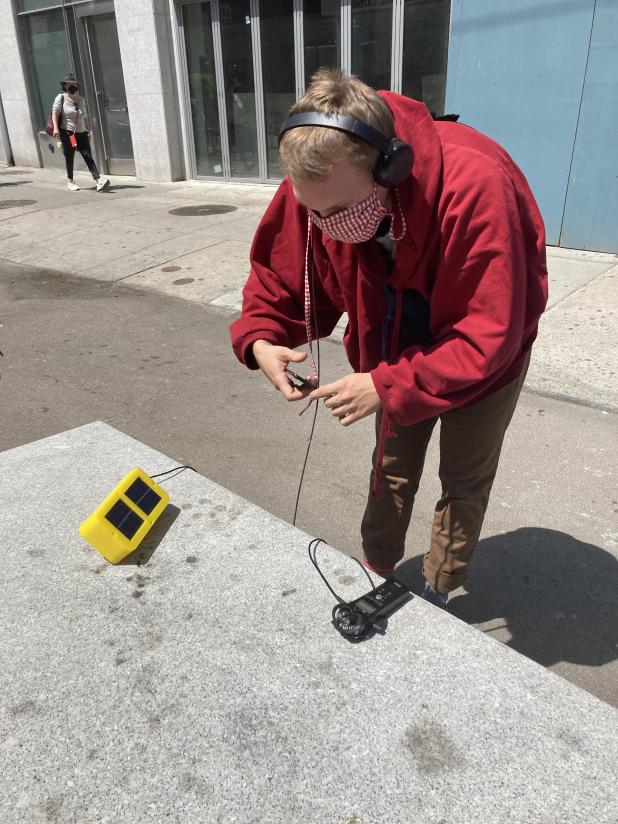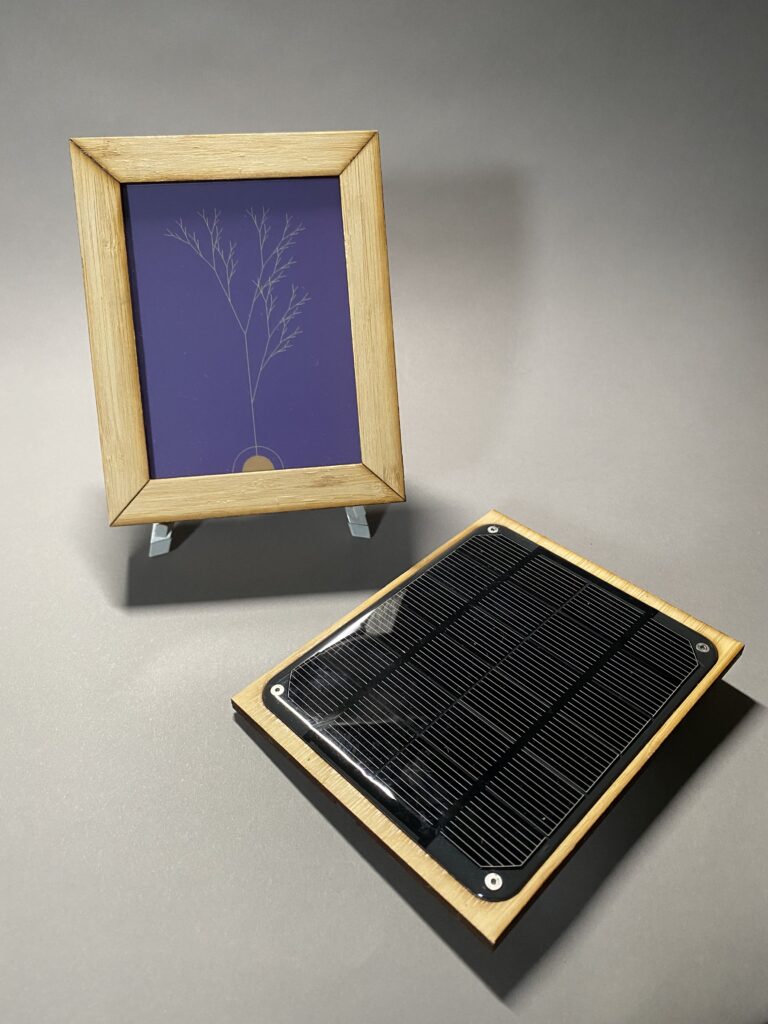Back to main Energy page
- Office Hours
- Student Documentation
- Deliverables
- Assignments
- Weekly Syllabus
- Class 01, 02/02/21: Blackouts and the Big Bang
- Class 02, 02/09/21: Making things move
- Class 03 02/16/21: Orders of magnitude
- Class 04 02/23/21: Storage – Capacitors
- Class 05 03/02/21: Big Kinetic
- Class 06 03/09/21: Catch up / AMA / Guest
- Class 07 03/16/21: Midterm primary project presentations (Kinetic or measurement)
- Class 08 03/23/21: Solar 1 – Overview
- Class 09 03/30/21: Solar 2 – Strategies for small, medium, large solar
- Class 10 04/06/21: Storage – Batteries
- Class 11 04/13/21: Solar 3 – Balance Of System
- Class 12 04/20/21: Catch up day / AMA / Guest
- Class 13 04/27/21: Workshop
- Class 14 05/04/21: Final presentations
- Class Policies
Office Hours
This is my online office hour calendar. The class will be conducted online, but from time to time I may be able to be on campus for in-person meetings.
Student Documentation
Your documentation links will go here.
| Phil Caridi | https://www.philcaridi.com/energy/ |
| Brandon Roots | https://brandonroots.com/category/itp/energy/ |
| Jake Sherwood | https://jakesherwood.com/blog/energy |
| Lu Lyu | https://www.lu-lyu.com/course/energy/ |
| John Bezark | https://www.johnbezark.com/ITP/Energy/Energy+Blog |
| Daniel Ryan Johnston | https://danielryanjohnston.com/energy |
| Funzo Cheng | https://www.notion.so/funzocheng/13cc20dbfb794757bc4785cadb69711e?v=b57b02a3fee042728912ca152d6531d0 |
| Duncan Figurski | https://wp.nyu.edu/tischschoolofthearts-duncanfigurski/2021/02/08/energy/ |
| Philip Cadoux | https://philipcadoux.netlify.app/blog/ |
| Minjun Kim | https://minjun.com/energy/ |
| Russell Ladson | http://www.russellladson.com/energy |
| Todd Whitney | https://www.notion.so/612b13a8567e47a7b983276e8f5d22ea?v=be0492d81628496f8a0ea98c6fb2acc8 |
| Jason Gao | https://itp.jasongao.me/energy/ |
| Paulami Roychoudhury | https://www.paulami.in/blog/category/Energy |
Some previous class work:
Examples of previous class documentation: Roland Arnoldt Yeseul Song Sam Chasan Jason Young Dan Oved Dominick Chang Jenny Lim Anita Mbabazi Fanni Fazakas Marcha M Johnson Arnav Wagh
Also check out the archive of past class projects.
Note: Yeseul Song took the Energy course, as did David Rios, who holds the record for biggest magnet/coil wearable synthesizer.
Deliverables
What you’ll do, and when.
By 2/9 (Week 2) : Set up documentation and add URL to class spreadsheet.
By 3/16 (Week 7) : Read Smil. Document secondary project (kinetic or measurement). Contribute to class discussions. Contribute production and storage information to spreadsheet. 50% of secondary reading/listening.
On 3/16 (Week 7) : Kinetic or Measurement project presented in class
By 5/4 (Week 14) : Document secondary project (Solar, research, or freeform). Contribute to class discussions. 100% secondary reading/listening.
On 5/4 (Week 14) : Present primary project (Solar, research, or freeform)
Assignments
For 2021, I’ve tried to think of ways to adjust the work of the class to recognize the different budgets, access to materials and facilities, and personal interests, while still maintaining clear, high expectations and deadlines. To that end, I’ve restructured the Energy assignments as follows:
Each half of the semester will have two assignments, one involving fabrication and one focused on research or writing. Any assignment can be considered primary or secondary (your choice!), which determines how much time you should spend on them and what degree of finish and documentation they should achieve.
Scope: A secondary project may be completed in under a week, perhaps some hours over several days, and be documented as a short write-up on your blog. A primary project will take sustained effort over several weeks and be your main focus for the class during that time. Whether written or fabricated, it should represent a high degree of finish and refinement, and it will be formally presented to class at midterms or finals.
Weeks 1-7: Kinetic Project and Measurement Project (more detail on what those mean below). Pick one as primary, to be presented in week 7. The other will be secondary; document this on your blog and feel free to bring it up during class discussions.
Weeks 8-14: Solar Project or Research Project or Freeform Final. Pick two, and make one primary and one secondary. The primary will be presented in week 14, the secondary will be documented on the blog and inform class discussions.
Additional small weekly prompts and suggested readings may be mentioned in class and noted in the syllabus.
We’ll maintain a class spreadsheet where you will add your documentation link and other notes about your work this semester – consider if a checklist to track your work. I’ll share the link in class and via email.

Kinetic project
A kinetic project involves kinetic energy – things will move! In the past I’ve made this very specific – for example: “Turn motion into light.” This year there will be more latitude, both in the ability to make it a primary or secondary project, and in the exact way you approach the challenge. Maybe you will want to, as in past classes, light up some LEDs with a DC gear motor or stepper. Perhaps “pure” kinetic art – motion for motion’s sake – is of interest, or micro-wind and -hydro. All on the table. I simply ask that you think carefully about what the inputs and outputs of your project are in energy terms.
To illustrate the difference between a primary and secondary kinetic project, let’s assume that you do focus on motion to light for your kinetic project. For a secondary project scope, you might demonstrate powering a simple electrical load like an LED with a motor, breadboard a full bridge rectifier circuit, and record the short circuit current and open circuit voltage of your project. Document your project on your blog and be prepared to discuss informally in class.
To extend this to a primary project scope, you might test a few alternatives for generators (say, stepper vs DC gearmotor), and try a few forms of physical input (say, hand crank vs. foot pedal). Once you’ve tested some options, you make a selection and create a prototype that involves a soldered circuit and a well-fabricated enclosure. You also set the goal of reading the Smil text entirely by the light you generate. Document your project in detail, with measurements, and formally present the project in week 7.
See notes on mechanical energy converters for help getting started.
Measurement project
Measuring energy gives you insight into the process you are measuring, requires you to keep units straight (power vs energy; joules vs watt-hours vs watts, etc) and is helpful in comparing various processes in energy terms.
I ask that you commit to measuring and documenting an energy phenomenon during the first half of the semester. The choice of what to measure is up to you. A secondary scope might be monitoring the energy use of a single appliance for a few days; primary scope would involve either more devices, more time, or both, in addition to a thorough write-up and background research (say, Department of Energy stats on relevant subject).
See the notes on measurement materials for some ideas on what to try.
Solar project
Almost all energy we use comes ultimately from the sun, so it is appropriate to focus on solar power in an energy class. Usually when people say “solar” they mean photovoltaics – the conversion of light into electricity via special materials. But it could mean other things as well – solar thermal captures the heat from the sun, sometimes with concentrating mirrors; solar lighting directs sunlight into interior parts of buildings with mirrors or fiber-optics, etc.
Creating solar projects can be expensive, and testing them can be difficult. But if you choose this track as something to work on in the second half of the semester, you will be rewarded with a better understand of a key technology transforming energy around the world. ITP has a few resources for helping with PV projects and testing.
Research
As Smil notes, everything can be analyzed through the lens of energy. The research project is a formal opportunity to apply what you are learning to critical reading and research of a topic of your interest, especially one that may not be covered in depth with my material. I aspire that the class can collectively benefit from your research, so
- Cite sources.
- Place energy and power numbers in perspective, using the SI units we use in class, and
- Document your topic to serve as a class reference.
Freeform final
As with the first half of the semester, you are to do one primary and one secondary project in the second half of the class. If either the solar or research project doesn’t work for you, you have this third option: free form final. Apply the course concepts to your choice of undertaking – perhaps to support a project in another class, or your thesis.
Class discussions / participation
There is so much material that could be part of a class like this. I rely on you to help bring in material that you find of particular interest. I won’t directly cover, for example, EU carbon markets, but I would love it if you brought that up in class. To that end I’ll ask that you come ready to discuss something you’ve read, listened to, or seen related to energy at least twice in the semester.
Readings
Starting in week 2, we will read one chapter a week of the Smil text. This will form the basis of periodic class discussions and provide a wealth of information for a variety of energy topics.
Grading
The most important thing you can do is arrive zoom to each class on time and be prepared to actively participate and engage with the material. Please put your best effort into assignments and readings, and keep a record of your work online. ITP is pass fail, but the equivalent of a B or higher is required to pass.
- 20% In-class work and participation, readings, discussions.
- 10% Documentation
- 10% Midterm secondary project
- 20% Midterm primary project
- 10% Final secondary project
- 30% Final primary project
Weekly Syllabus
Class 01, 02/02/21: Blackouts and the Big Bang
Introductions, purpose and organization of the class.
In class: Pendulums
For next week:
- Get the Smil text.
- Add documentation link to class spreadsheet.
- Consider which project (kinetic or measurement) will be primary, research materials and be ready to order anything you might need.
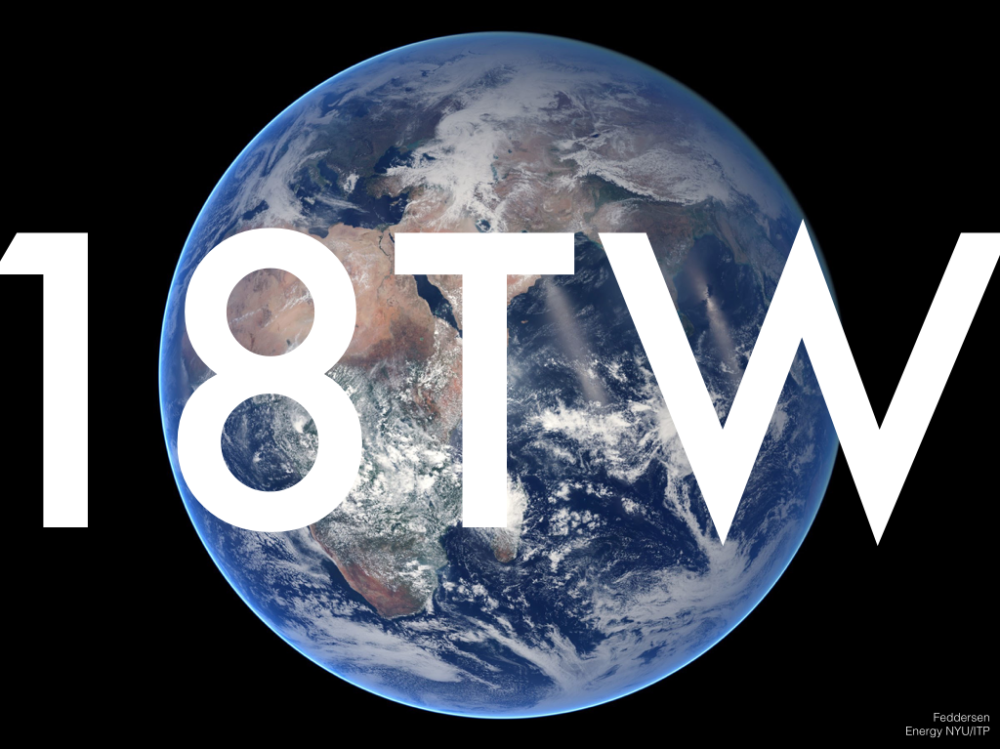
Class 02, 02/09/21: Making things move
Kinetic energy, and a 15 minute history of energy since the beginning of the universe.
In class: Motors as generators. Open circuit voltage and short circuit current.
For next week:
- Read Smil chapter 1.
- On your blog, post a brief plan for your primary project, highlighting necessary materials and noting which you have and which you need. Also post one or two sentences about your planned secondary project.
- Review this Paradiso Starner paper for a great example of considering first-principle bounds on human energy.
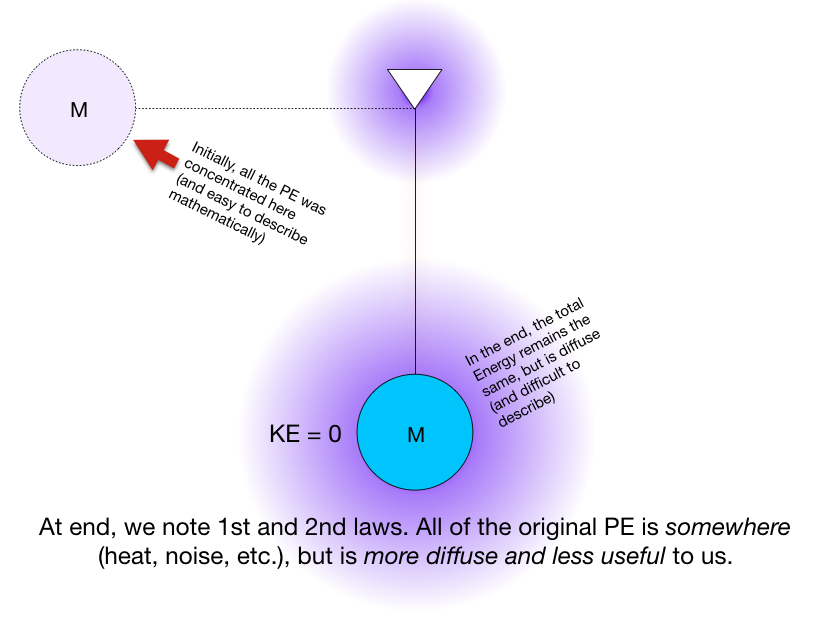
Class 03 02/16/21: Orders of magnitude
A roadmap for thinking about energy, from small daily phenomena to global factors.
In class: Smoothing out and rectifying electricity from kinetic generators. Measuring AC and DC.
See these Hackaday notes on Rectifiers.
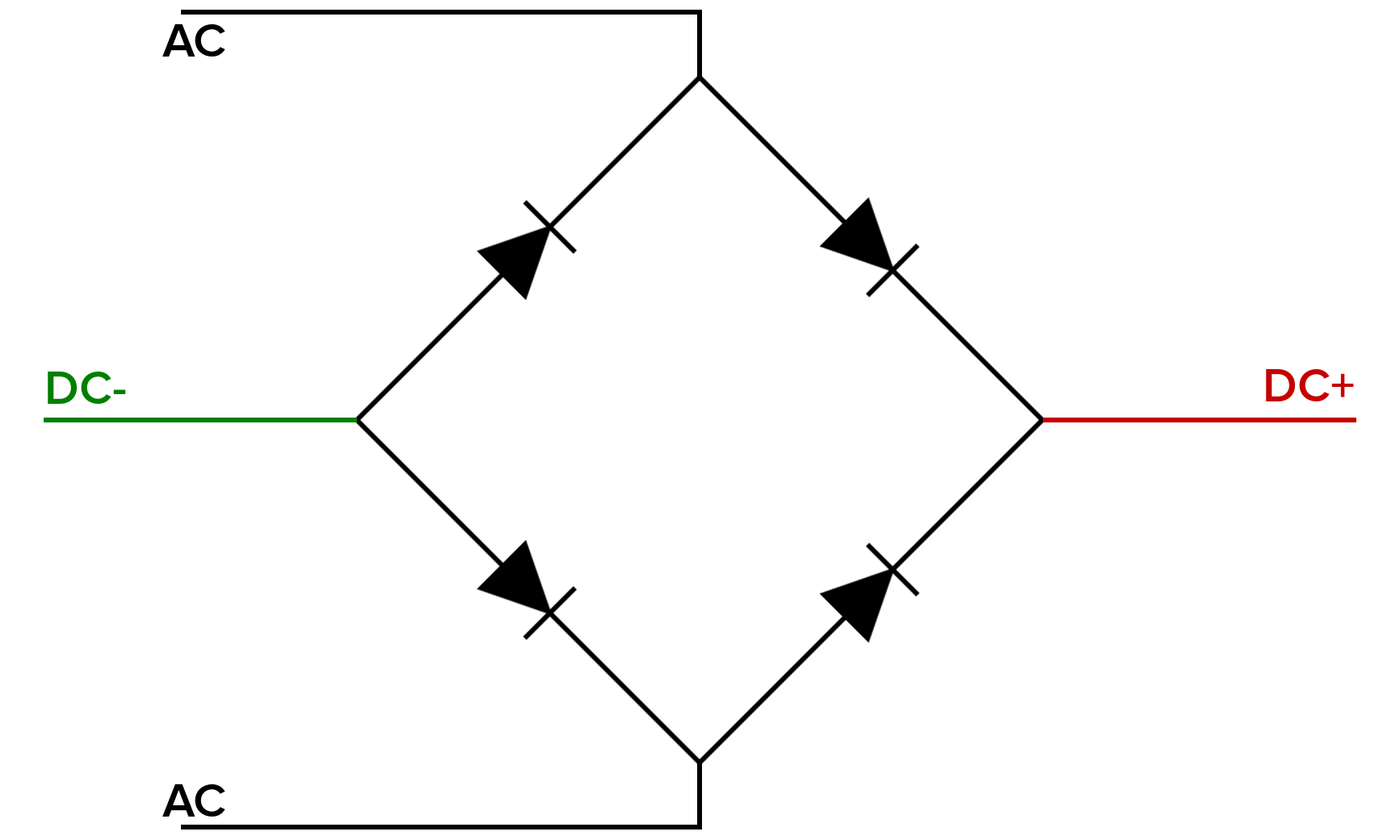
For next week:
- Read Smil chapter 2
- Continue working on primary and secondary projects.
- Prepare to briefly describe your projects in class next week.
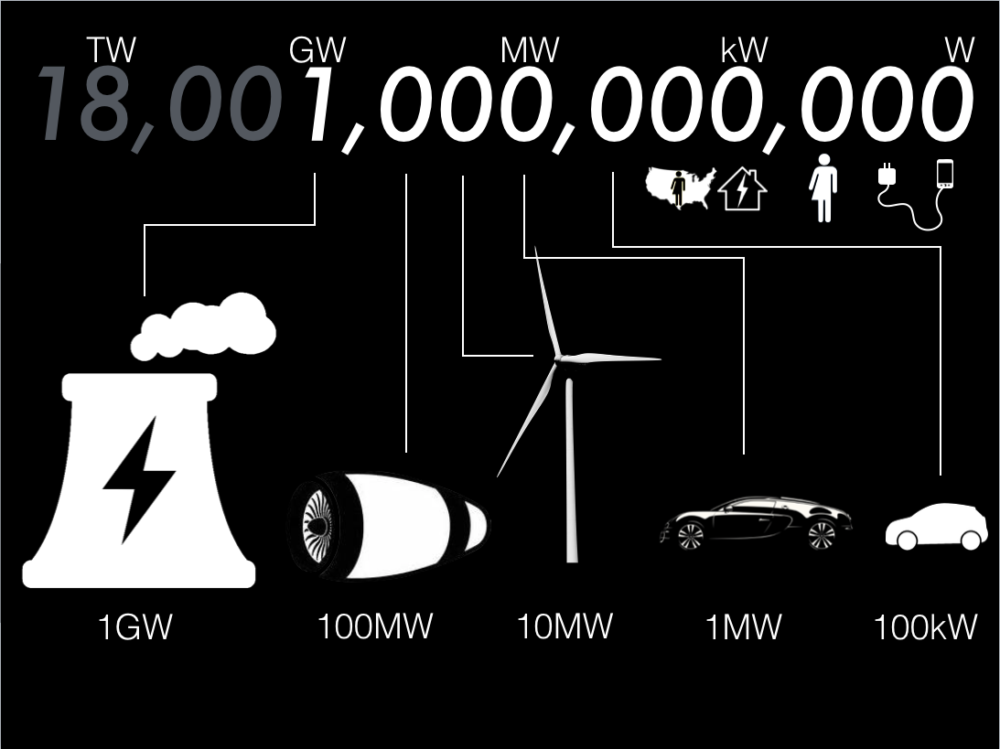
Class 04 02/23/21: Storage – Capacitors
We’ll look at a familiar component, the capacitor, is sizes (~1 Farad, or more) where they begin to function as energy storage devices.
In class: Project check-in, capacitor demos.
For next week:
- Read Smil Chapter 3
- Continue working on primary and secondary project
- Find a document reflecting energy you buy (for example, and electrical or gas bill) to share in class next week.
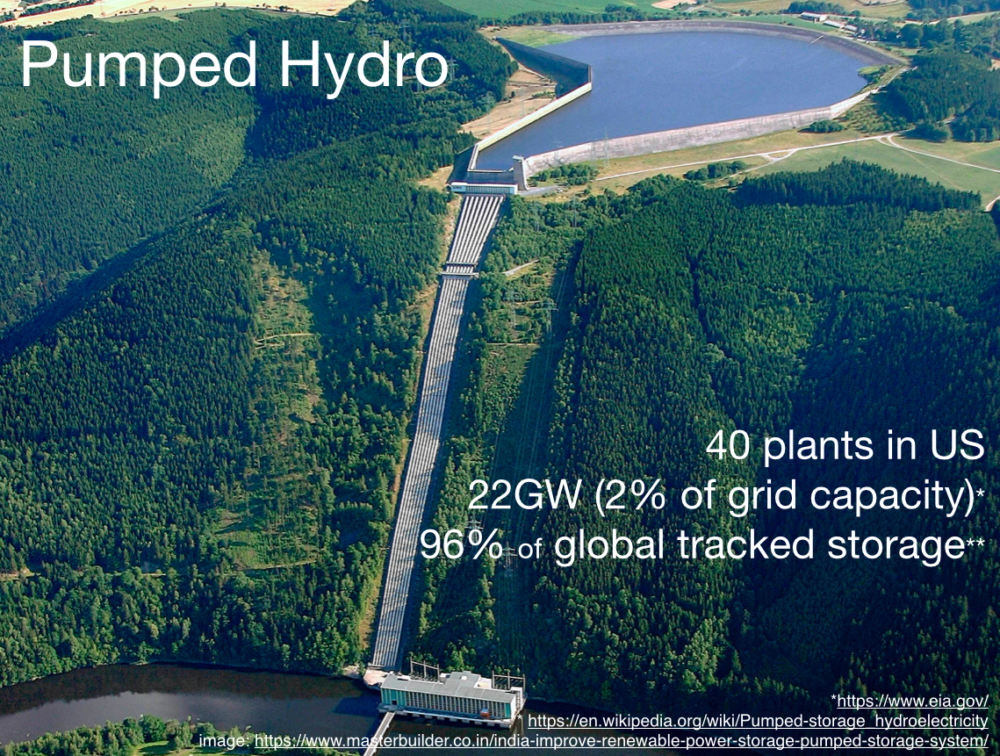
Class 05 03/02/21: Big Kinetic
Grid-scale kinetic energy devices.
In class: Review personal energy bills. Grid-scale kinetic energy discussion.
Data:
Map of US electrical resources
BP Statistical Review (annual, comprehensive, global energy stats)
For next week:
- Smil Chapter 4
- Listen to the recent “Texas Crisis” episode of the Ezra Klein podcast. He interviews Leah Stokes and David Wallace-Wells. (Here’s the Apple Podcast link for the same episode.)
- Review the work of Trash Club, in particular the projects, readings, resources.
- Finalize projects and continue documentation, for presentation in week 7
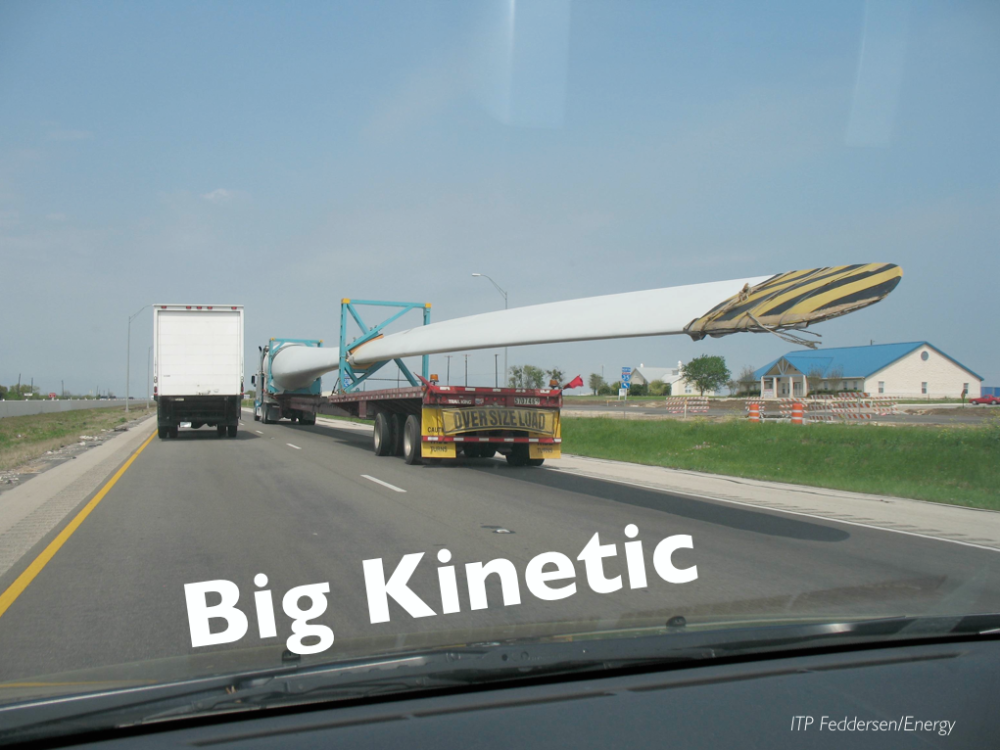
Class 06 03/09/21: Catch up / AMA / Guest
Rashida Kamal and Morgen Mueller from ITP’s Trash Club will help us understand embodied energy.

For next week:
- Finish your primary projects and your materials for presenting in-class next week.
- Finish your secondary project documentation on your blog.
Look ahead to second half of the semester:
- Discussion in two weeks with Paulami, Jason, and Russ.
- Some changes to how class discussions are organized.
- Primary /Secondary project kick off.
- Production and Storage evaluation (contribute link and stats to class document ‘Production’ and ‘Storage’ tabs)
- Secondary reading: Find at least three sources to read/listen/watch to inform class; post links on the class spreadsheet.
Class 07 03/16/21: Midterm primary project presentations (Kinetic or measurement)

Brandon Roots Escapement 
Philip Cadoux Kinetic UV Spray Can 
Phil Caridi Pendulight Detail 
Phil Caridi Pendulight 
Paulami Roychoudhury Solar Pi 
Minjun Kim Energy Memory Box 
Todd Whitney’s BEAM circuit 
Lu Lyu’s DIY Motor 
John Bezark’s Wind Friend 
John Bezark’s Wind Friend 2 
Daniel Ryan Johnston Shower Alarm 
Funzo Cheng’s Shadows 
Duncan Figursky’s Pendulum 
Jake Sherwood’s Kimagnet 
Russell Ladson’s Kinetic Sculpture 
Brandon Roots’ Hacked SmartSocket
Class 08 03/23/21: Solar 1 – Overview
We begin a series of weeks looking at solar technology in depth.
In class: Wrap up midterm discussions, list secondary projects. Brainstorm upcoming discussion topics. Solar 1 notes.
For next week:
- Post primary and secondary project plans.
- Add at least one line to the class spreadsheet detailing a solar panel option.
- Add your name next to one of the topics from the brainstorm.
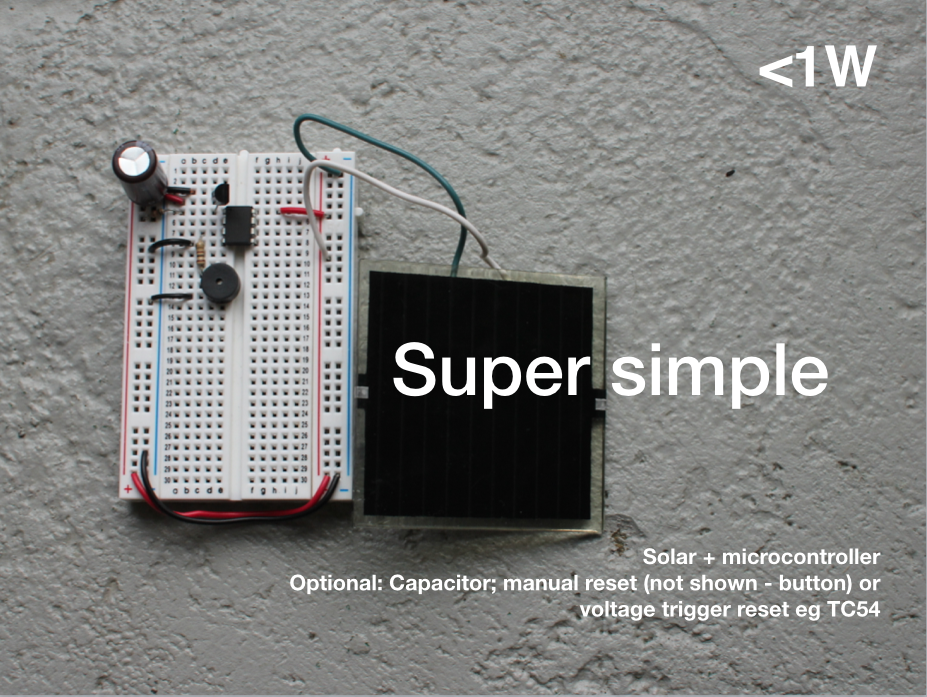
Class 09 03/30/21: Solar 2 – Strategies for small, medium, large solar
How to think about solar resources; how to assess sunlight at a location. How to budget a project’s energy requirements.
In class: Russ discussion. Review project proposals; review solar resources in spreadsheet. Solar Strategy notes.
For next class:
- If your primary project is solar – create a draft bill of materials with your project’s main components and rough (estimated ok) energy budget.
- If your primary project is research – outline your research plan and identify sources.
- Add three sources of energy information (text, data, podcast, video) you have used or plan to use to the class spreadsheet.
- Watch the Amp-hours and C-Rate video in preparation for discussing batteries next week.
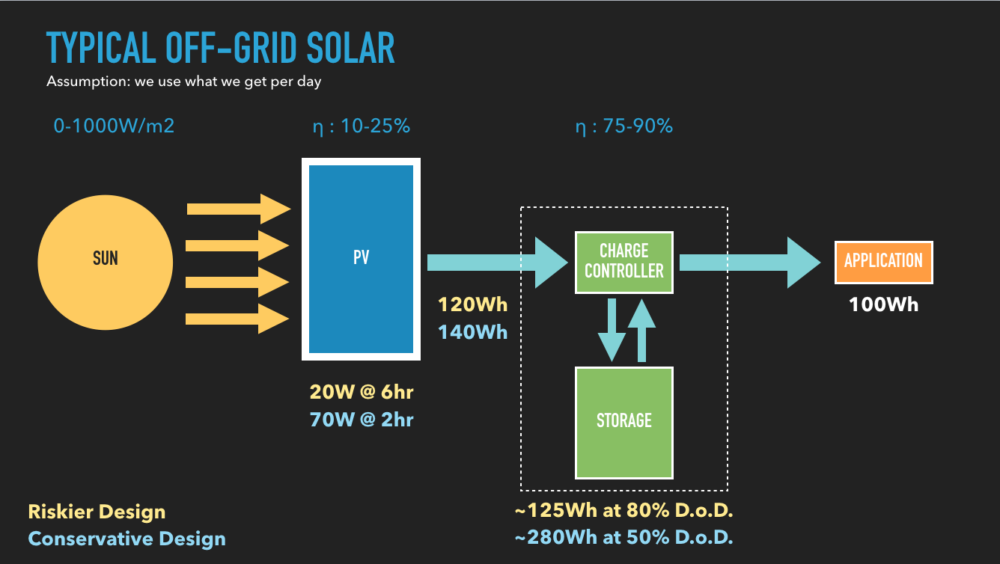
Class 10 04/06/21: Storage – Batteries
Batteries are terrible, but also the best things we have to store electricity.
In class: EV discussion. Project energy budget discussion. Look at battery specs in our spreadsheet. Battery slides.
For next class:
- Finish Smil (Chapters 5 and 6).
- Add information from at least one battery to the storage tab of the class spreadsheet.
- Continue developing your primary and secondary projects.
- Prepare for the Human Energy group discussion next week.
- Prepare for a guest speaker in week 12. Thanks to an introduction from Tom, we’ll be joined by Jamil Ellis, CTO of Bright Power, a leader in improving energy and water efficiency in buildings. See also his podcast, Ellis Conversations.
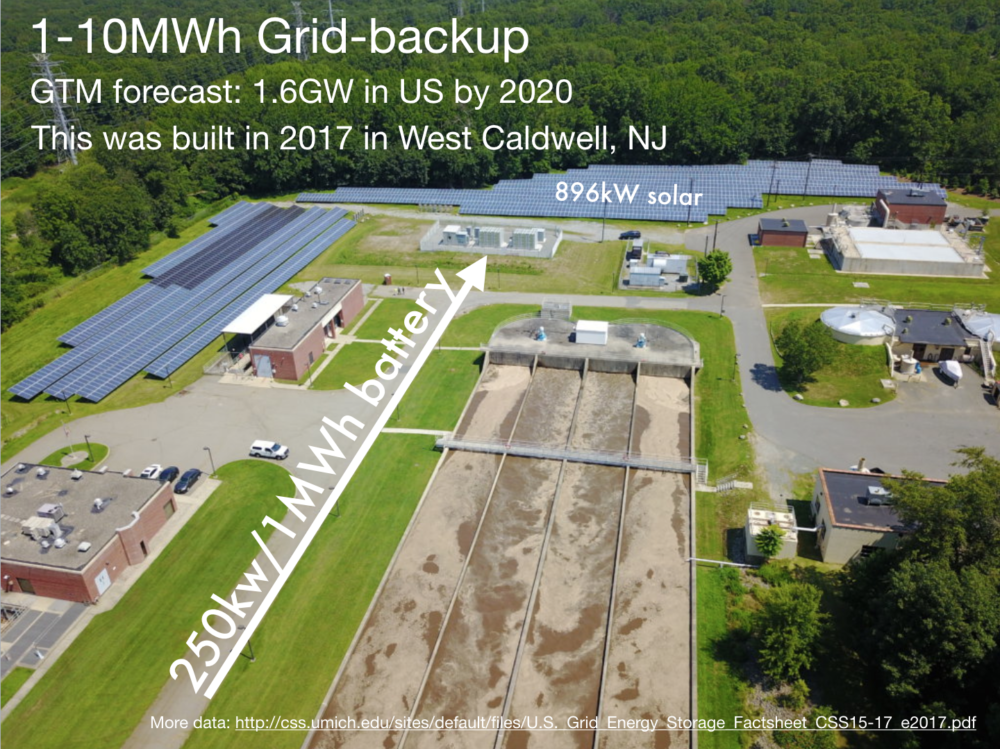
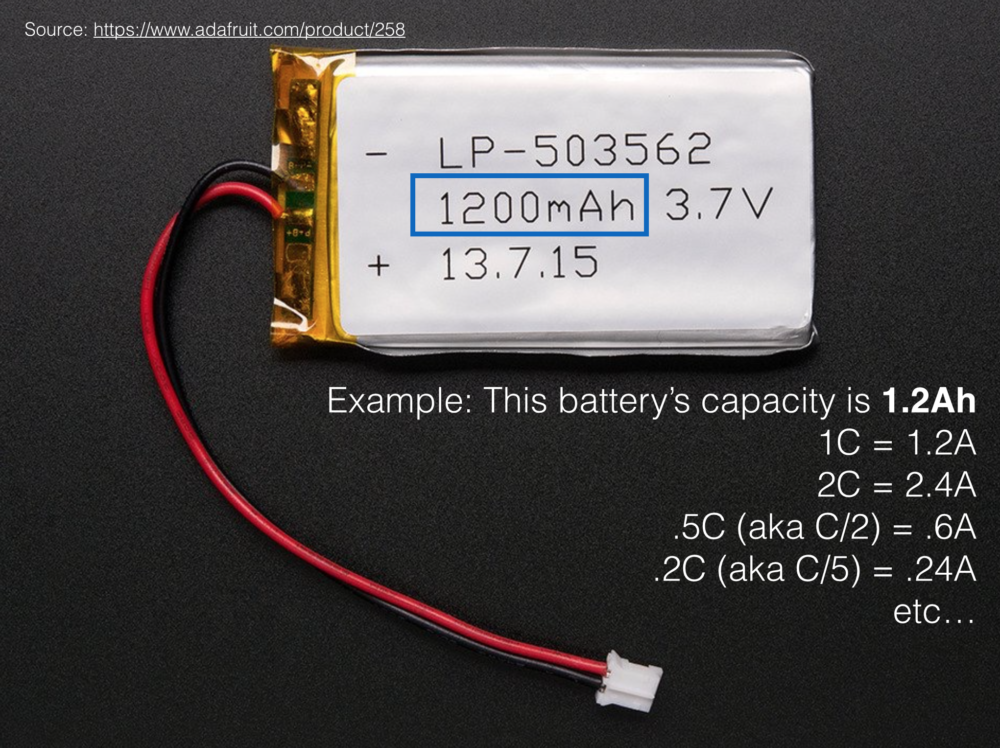
Class 11 04/13/21: Solar 3 – Balance Of System
Solar panels need lots of stuff to function. Collectively that “stuff” is the “Balance of System” – everything from inverters to connect solar to the grid to the mounting systems that hold panels to the roof. We’ll also look at related technologies such as solar thermal and indirect solar lighting.
In class: Human Energy discussion. Project check-in. Solar 3 – Balance of System.
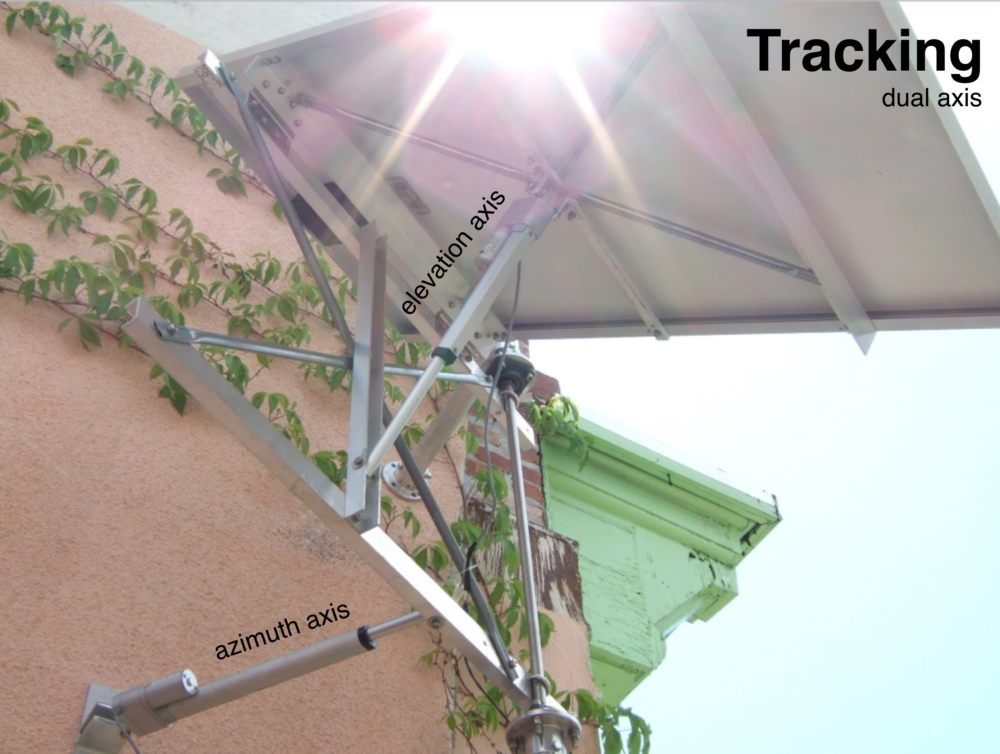
Class 12 04/20/21: Catch up day / AMA / Guest
Catch up on solar thermal and solar lighting. Entropy discussion.
Today we’ll be joined by Jamil Ellis, CTO of Bright Power, a leader in improving energy and water efficiency in buildings. See also his podcast, Ellis Conversations.
Class 13 04/27/21: Workshop
Class 14 05/04/21: Final presentations

Daniel Ryan Johnston’s Singing Solar Ring 
Todd Whitney’s BEAM Robots 
Russell Ladson’s Mushroom Capacitor 
Philip Cadoux’s Solar Plant Light 
Phil Caridi’s SolarDex 
Minjun Kim Hair Solar Cell 
John Bezark’s Solar Library 
Funzo Cheng’s Solar Paper Sculpture 
Energy 2021 Final Class 2 
Energy 2021 Final Class Zoom session 
Duncan Figurski’s SolarSynth. 
A solar-powered e-ink display generates fractal patterns. By Brandon Roots.
Class Policies
At the outset of the semester, remote Zoom sessions will occur during regular class times. On-time attendance will count just as with regular classes; however, I understand that being in different time zones can affect this. If you think you will not be able to regularly attend the online sessions, please let me know as soon as possible so we can make asynchronous arrangements.
While I hope to be able to schedule in-person activities, we may not ever be able to meet as a class entirely in person, so we have to make Zoom as good as possible. It will help me connect with you if you keep your cameras on and your focus on the class. Please resist the temptation to multitask – keep other software to things related to class. As with attendance, I understand not all situations will allow camera-on full access all the time, so please let me know before hand if you think you won’t be able to Zoom this way on any given class.
Participation & Attendance
Attendance/participation notes will be updated to reflect remote/asynchronous learning, as per the policies above. If you will miss any class, or will be unable to attend at a certain time, let me know asap.
Personal Device Use
Please limit other software to what is helpful for the class and, especially when your fellow students are speaking, give them your undivided attention.
